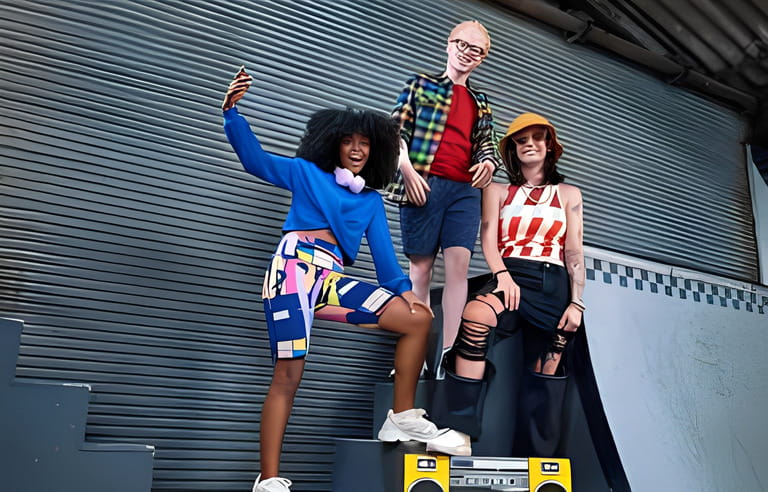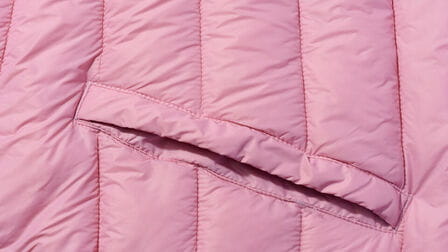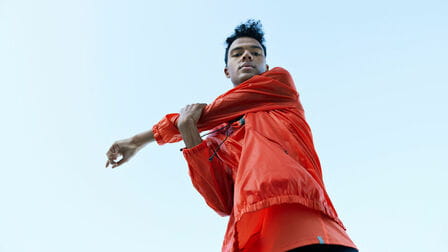Gen Z is embracing 90's fashion trends like oversized flannels, mom jeans, and chokers in a major way. This phenomenon goes far deeper than mere nostalgia. For Gen Z, 90's styles represent comfort, self-expression, sustainability, and a touch of rebelliousness against unrealistic beauty standards.
Nostalgia for a Simpler Time
The Digital Age Anxiety
Gen Z is the first fully digital generation, having grown up entirely immersed in technology and social media. Always being plugged in has bred anxiety, fear of missing out (FOMO), and pressure to cultivate a perfect online persona. The 90's, a pre-internet time remembered for its colorful cartoons, boy bands, and lack of filters, seems innocent and carefree by comparison. The nostalgia it evokes is a refuge from the stress of nonstop connectivity.
Grunge Style as Escapism
The grunge styles of the 90's, with their trademark flannels, Dr. Martens boots, and thrift store aesthetic, also represent escapism for Gen Z. Grunge fashion originally evolved as a reaction against consumerism and mass media. Wearing oversized plaid shirts and ripped jeans now lets Gen Z symbolically retreat from the branding and consumption saturating their social feeds.
Reclaiming Identity Through Fashion
Eclectic Self-Expression
Gen Z curates unique Looks from vintage shops and thrift stores to piece together influences from 90’s grunge, prep, hip hop, and other styles. This mashup allows them to play with different facets of their identity. Trying on the popular 90’s styles from before their time has become an avenue for self-discovery and communicating who they are to the world.
Beyond Labels
Moreover, Gen Z actively rejects labels and defies being boxed into specific fashion categories. The eclecticism of 90’s style echoes their desire for fluid self-expression. Combining a crop top, mom jeans, and flannel shirt communicates complexity. Fashion provides a means to share their multifaceted selves.
The Allure of DIY Culture
Handcrafted Imperfections
Fast fashion and mass manufacturing go against Gen Z’s values. Instead, they embrace DIY, upcycling thrift store finds and handcrafting signature looks. Customizing jeans and t-shirts with patches, embroidery, bleaching, and other alterations makes them one-of-a-kind. The imperfections add character, telling a story.
Sustainable Self-Expression
DIY fashion enables self-expression with less harm to the environment. Gen Z is highly aware of the human and environmental impacts of overproduction and textile waste from big brands. For crafty and conscientious Gen Z, repurposing, mending, and altering used clothes allows uniqueness and sustainability to coexist beautifully.
Social Media Subcultures & Trends
TikTok Time Capsule
On TikTok, Gen Z transports followers back in time by recreating 90’s and Y2K aesthetics. Users share thrift hauls, style vintage outfits, and use transitional filters and music. Nostalgia-baiting pays off with millions of views and followers as Gen Z latches onto these trends. TikTok’s collaborative culture built an interactive time machine where the 90’s revival thrives.
Democratized Inspiration
Moreover, TikTok democratizes trends. Instead of a few influencers dictating what’s “in,” everyday users drive what blows up on the platform. Gen Z consumers and creators participate in a dynamic cycle of inspiration. Seeing peers rework the 90’s Leo slip dress or grunge makeup motivates others to reinvent the decade’s iconic fashions themselves.
Beyond Nostalgia: Subverting the Past
Reclaiming Rebelliousness
Gen Z still infuses 90’s styles with modern meaning. While flannels signified grunge’s counterculture ethos before, for Gen Z wearing oversized plaid connotes comfort and the courage to pursue individuality over fitting in. Doc Martens still convey rebellion, but not because of their punk rock roots. Rather, Gen Z’s bold self-expression empowers them to define themselves.
New Narratives
Y2K trends also get updated interpretations. Butterfly hair clips now represent playfulness rather than conformity to beauty standards. Crop tops and chokers signal body positivity and self-love instead of objectification. Gen Z retains what resonates and transforms the underlying cultural narratives. The 90’s revival ultimately fuels the constant evolution of both fashion and identity.
Embracing True Beauty

Conclusion
Clearly, Gen Z’s fixation on 90’s fashion runs much deeper than mere retro trendiness. These styles enable self-discovery, creative expression, rebellion against labels, and promoting body positivity. Gen Z is far from passive consumers of nostalgia; rather, they actively reinterpret the decade’s aesthetic to align with their progressive values while retaining its carefree appeal as an escape from modern anxieties. So while they may embrace the chokers and butterfly clips, they do so with purpose and meaning making the vintage pieces uniquely their own.












